Basingstoke (or ‘Braising steak’ as Mrs. P calls it) isn’t the first place you’d think of for a week away in the countryside. In fact, the name is a bit of a joke in England: the sort of place associated with seventies urban development and sterile out-of-town business parks. Like Swindon, Slough or Maidenhead. On arriving here one morning last July, Mrs. P and I found it to be a nice enough town, not particularly exciting, perhaps; not much to distinguish it from any other town in the country, but nice enough and trying hard, through a process of redevelopment, to regain a sense of its identity. There is some literature associated with the town: Hardy set some of Jude the Obscure here and Miss Marple travels to Basingstoke to solve one of the suspiciously high numbers of murders she seems to be involved in. Jane Austen, being a local girl, also knew the town particularly well.
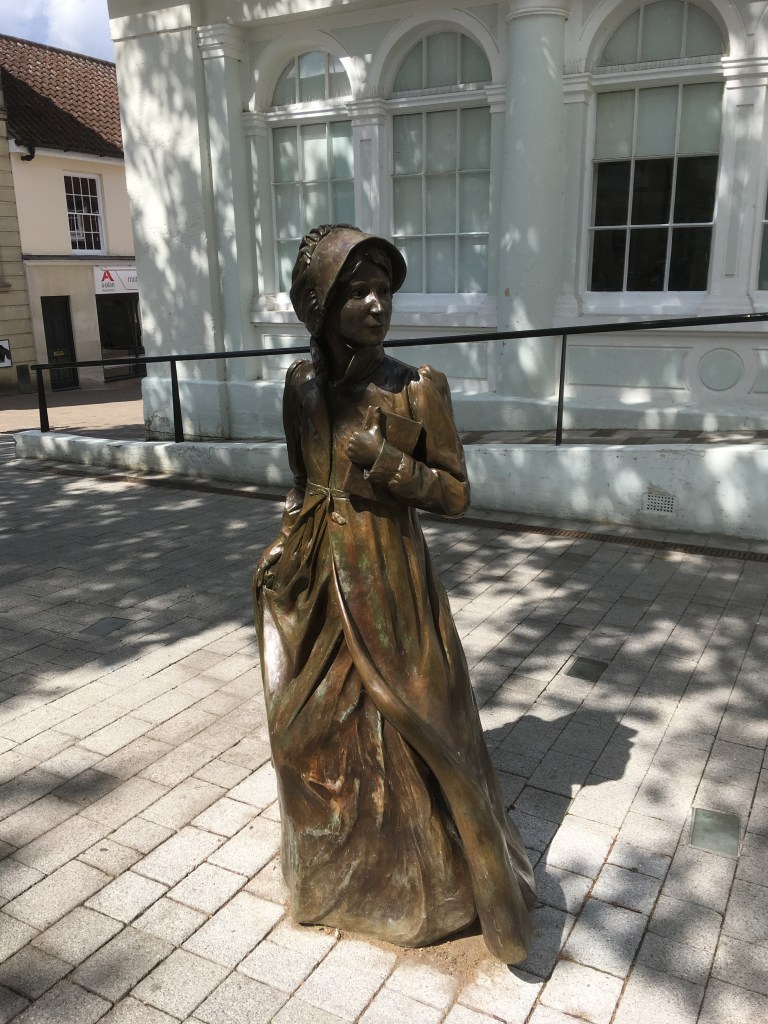
A statue of Jane Austen, unveiled in 2017 for her bicentenary stands in the square outside the museum. A life size bronze, it depicts Jane as an everyday member of 18th Century townsfolk, in town for a bit of shopping. The only indication of her literary status is the book she carries under her arm. She has a slightly worried look on her face as she hurries away from the museum. Jane knew Basingstoke well. Being the social hub of the area, there would have been dances and concerts that Jane could have attended. Balls were held at the Angel Inn and the Assembly rooms, both in the town square though, sadly, neither building remains. I had a little look around the museum; it seemed more interested in recent history than looking back into its past and there were many examples of packaging, so that we could marvel at how much, or how little, designs of our favourite grocery labels have changed over the years. There were some archeological displays, however, including a very interesting exhibit on stone age settlement of the area.
After a very quick look around the town, we drove to Dummer, just a couple of miles to the west. There’s a little hotel here, called The Wheatsheaf, that was well-known to Jane, as it was here that the coach from London would drop the local mail, and so she would walk to collect it. The pub is run by Chef & Brewer: a pub management company whose mission is, it would seem, to ensure that all local character is removed from any building bearing their corporate branding. Most of the original building is difficult to see behind the modern additions, but they at least do a consistently good pint, were polite and well-mannered and did a tasty, and astoundingly cheap, fish and chips. The menu, and the beer choice all looked good but there was nothing particularly ‘Hampshire’ about it: we could have been at any pub in any part of the country. One of the pleasures of travelling is enjoying local food and local beer; it would be nice if they could provide something to reflect the local area.
We spent the afternoon touring around the countryside. An area, just to the west of Basingstoke, where young Jane grew up. Just a short drive from the main road are grand houses and picturesque villages with large Georgian rectories: testament to a time when clergymen where more than just vicars but co-ordinated health, welfare and social care for their communities and, consequently, were public figures of high standing. This was the class into which Jane Austen was born: her father was Rector of Steventon when Jane was born in 1775.

Steventon is a tiny village and what little there is of it is a long way from any major thoroughfare. The little church takes some finding but is worth seeking out. It is lovely, with an ancient yew in the churchyard. It is simple and unostentatious, a simple plaque marking Jane’s association with the church and some memorials to members of the Austen family. a short walk down the lane and you can see the site of the rectory where Jane was born. There is a magnificent Lime tree, planted by Jane’s brother, James in 1813, and the well is marked by a small fenced-off area. If you didn’t know this was the site, you wouldn’t stumble across it by chance. There are no signs (aside from several saying “keep out”) to mark the site for the casual visitor. This is probably just as well: there is plenty for Austen enthusiasts to see elsewhere and it’s nice to enjoy some peace and quiet on her trail.
We spent the rest of the afternoon driving around the quiet Hampshire lanes in the sunshine. We passed the Deane Gate Inn, where Jane walked to catch the coach to London, and then, finding it full, walked all the way back home again. The inn is now being restored after a long period of neglect. Ashe Rectory, a handsome Georgian building, was the home of the Lefroy family. Anne Lefroy was Jane’s close friend but, when she saw Jane flirting with her son, Tom, she sent him away to London to study Law. (he later admitted to his teenage crush on Jane and named his daughter ‘Jane’). Large country houses sometimes held extravagant balls in order to impress the locals and it was considered a great honour to be invited to one. A ball was the standard way for young couples to meet in the Regency era; an invitation to a party in a large country house could put a young woman into the running for a nice, marriageable rich bloke. This explains Mrs. Bennett’s unremitting desire for her daughters to attend local dances.
“At our time of life it is not so pleasant, I can tell you, to be making new acquaintances every day; but for your sakes, we would do anything. Lydia, my love, though you are the youngest, I dare say Mr. Bingley will dance with you at the next ball.”
Pride and Prejudice
Jane and her sister, Cassandra, attended dances at Deane House and at Oakley Hall, now a country house hotel. We had planned to stop here for tea but it came too close behind lunch, so we decided to press on to Chawton.
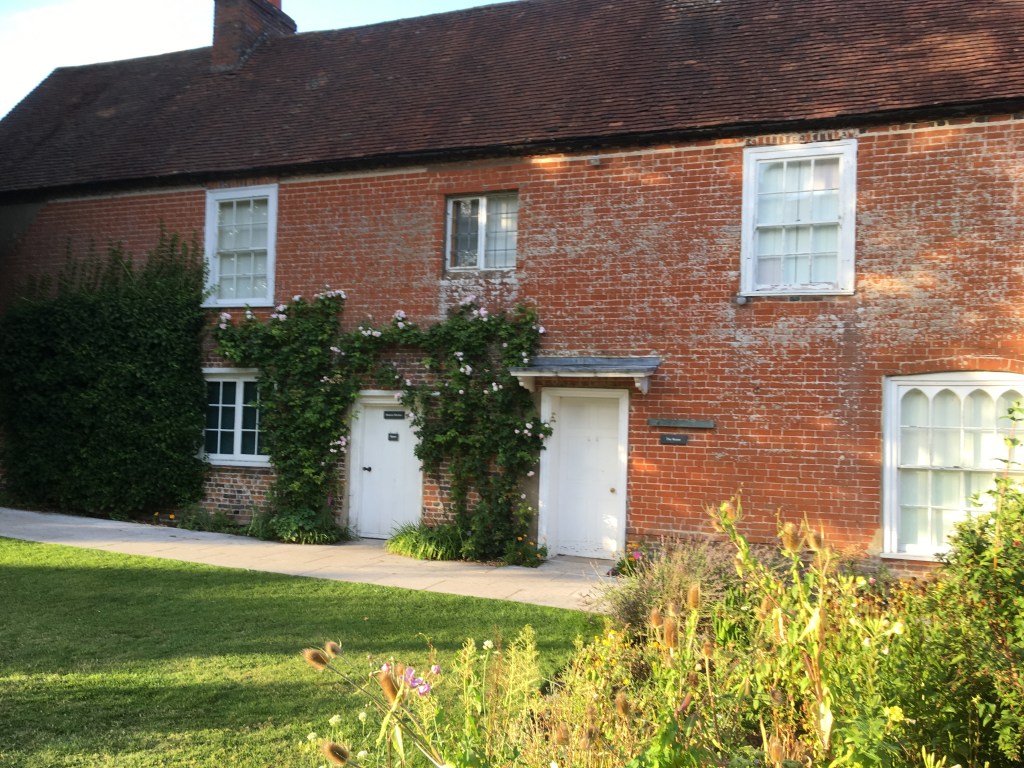
Jane Austen’s house, now a museum, stands by a road junction in a sleepy little backwater of a village on the road to absolutely nowhere. It is idyllically quiet, despite the traffic that thunders past nearby. It is difficult to believe, in the peace of a late summer early evening, that this was once the main road between London and Southampton. There was no-one around when we arrived, save for one lady, who was having difficulty reversing her car from the car park. I went to give my assistance and found the cause of her frustration. A black and white cat, sitting resolutely behind the vehicle, staring grumpily at the reversing car and clearly enjoying the power it had in preventing its movement. I gently pushed the animal with my foot and felt it tense against me. It wasn’t going anywhere. It made clear to me that my attempts to pick it up would be fruitless. I eventually solved the problem by standing by the cat in order to mark its position so that the motorist, by a complicated sequence of turns and reverses, could gradually move her car into a position where she could access the road. I stayed and talked to the cat for a while. We bonded, I tickled it under the chin and in return, it rubbed up against my legs until, bored, it wandered off to cause trouble elsewhere.
We had a charming little room. The door let in directly from the street and the bed took up most of the space but there was a TV and quite a sizeable bathroom. It is comfortable and well-decorated and has the best view of any place I’ve ever stayed, being directly opposite Jane Austen’s house. It is owned by Cassandra’s, the café next door and can be rented via their website. Mrs P and I took a short walk to take in the local village. Chawton is a delightful village and has some lovely little cottages, particularly to the North towards Alton. There is a park with some magnificent specimen trees, a children’s play area and a lovely quiet little pub, which was within easy walking distance of our front door (12 paces to be exact!). We went there that evening for beer and the most fantastic homemade pizzas. Still no local ale to try (Fuller’s again!) but a very pleasant place to spend an evening.
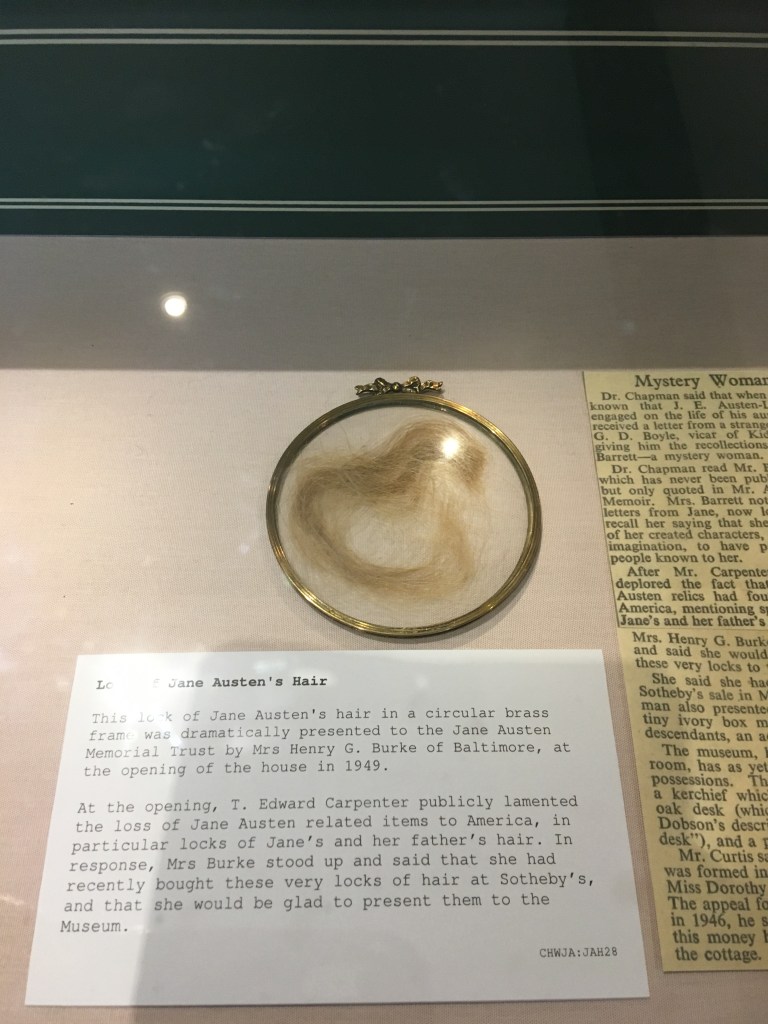
The next morning was wet. A light, persistent drizzle with the power to soak you through. We had a huge breakfast at Cassandra’s: I went for the ‘full Hampshire’ and got my taste of local food at last. the plate was groaning under the weight of locally sourced bacon and sausages. There was even a little pot of home-made beans. They were very good but I did not finish them, as the serving of beans with breakfast is not to be tolerated under any circumstances. Suitably refreshed, I took a trip to the museum. Clearly the main attraction of our stay and it did not disappoint. The staff were all welcoming, very informative and chatty with an obvious enthusiasm for all things Austen. I chatted with the young person in the shop about our favourite books (I chose Sense and Sensibility; she chose Emma. All Austen superfans choose Emma!). Inside the museum, the exhibits tell Jane’s story through the rooms she inhabited and the things she owned. I loved seeing her writing table in the room where she hid herself away in order to write; the turquoise ring she wore and a lock of her hair. There have been a few moments when I have experienced a physical reaction to seeing an object: a sort of shakiness, not dissimilar from butterflies. I felt it when seeing some of William Blake’s drawings, on seeing Shakespeare’s handwriting and I felt it now on seeing a lock of Jane’s hair, curled up inside a glass brooch. It had been snipped from her recently dead head by her sister, Cassandra. Hair held a great deal of significance to the Victorians: bereaved relatives had locks of hair to remember loved ones and lovers frequently exchanged locks of hair as a keepsake.
“I am sure they will be married soon, for he has got a lock of her hair.”
Sense and Sensibility
The house is beautifully decorated, maintaining the style of the early 19th century, as Jane had known it, and recreating furnishings that she would have had. I particularly enjoyed seeing the old kitchen and bakehouse. The gardens are beautiful and it was a shame that it was too wet to spend a lot of time outside. There was also a very fine gift shop, loaded with Jane memorabilia, books and DVDs. A beautiful boxed collection of her novels caught my eye and it was all I could do to resist buying them. I went instead to the basket of second hand books but found I could not browse as the black-and-white cat I had encountered in the carpark yesterday evening, was now snoring away on its literary bed. A notice nearby warned customers not to touch it, for ‘Marmite’ was quite a grumpy cat and prone to violent outbursts. Surely not? The same pussy cat that had wrapped itself around my legs yesterday evening?

I left the museum and walked along the road to the Chawton House. Probably less than a mile but the rain was coming down quite heavily now. Chawton House was once the home of Jane Austen’s brother, Edward. He had been adopted by the Knight family, who had no children of their own, and had inherited their fortune. It was Edward who had given Jane, Cassandra and their Mother the cottage to live in. There was a guided tour around the house but, as the guide said, ‘please feel free to wander off on your own’. So I did. I don’t mind a guided tour but, given the choice, I would far rather wander around a house on my own and read up about it later. Preferably in a quiet pub. This was a lovely old house: now devoted to women’s writing, with a library of writing by women on all subjects, which I was privileged to be shown around.

In the house, I Saw the dining table, around which the entire Austen family gathered and a fine exhibition of the books that Jane read or talks about reading. As they all came from Chawton House library and the Knights’ own collection, some of them would have been the actual editions she knew. Again, I had to miss the garden as it was too wet to look around outside; there is a great landscaped garden and a trail around it. I was able to visit St. Nicholas church, however. A tiny little church in the grounds of the house, where the Austen family came for worship. There is a charming little statue of Jane in the churchyard and the graves of her mother and sister.
Jane regularly walked from Chawton to Alton to visit friends or to shop, so, collecting Mrs. P and, after another quick look around the gift shop, we retraced her steps and walked the mile and a half into Alton. It was very wet and by now, quite unpleasant. I went for a wander while Mrs. P went shopping. I found the houses of Peter and Iona Opie, collectors of folklore and children’s stories, and Edmund Spenser, author of The Faerie Queen, who allegedly had a cottage in the town. I had a look around the museum, where there were displays about local industry, hop-growing and sweet Fanny Adams, an eight-year-old girl who was murdered in Alton in 1867. There was a display about local writers too, featuring Flora Thompson, who lived at Liphook, and Elizabeth Gaskell, who died in Alton in 1865. There is a trail around the town, which allows you to see the houses of Austen’s friends, her doctor, and the site of her bank (Austen, Gray and Vincent (her brother, Edward, was a partner)). I was in no mood for a long, exploratory walk so I trudged back through the drizzle to meet Mrs. P, who had now shopped the town dry. She had bought some fancy cakes too, so we walked back to our room for tea.
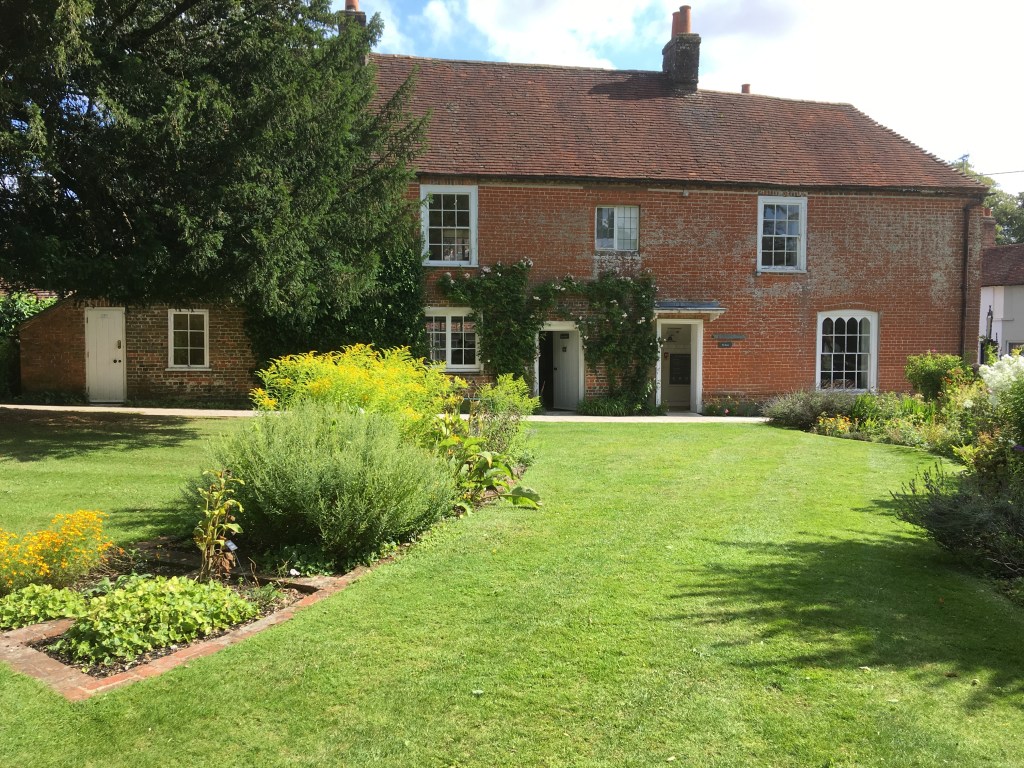
That evening, we went back to the Greyfriar Inn for more pizza and more beer and very nice it was too. I can also thoroughly recommend Cassandra’s, both for the café and the room: I have rarely stayed so close to the home of a great person and to see the museum from my bedroom window was wonderful. The next day was bright, glorious sunshine, enabling us to have a quick look around Austen’s garden. It looked glorious in bright sunshine: bright and green and fresh and I’m glad we got a chance to see it at its best. Today, we were continue our journey through Austenland, heading for Winchester, where Jane spent her last few days.
If you’d like to know more about Jane’s life and the places she lived, I highly recommend Jane Austen at Home by Lucy Worsley.
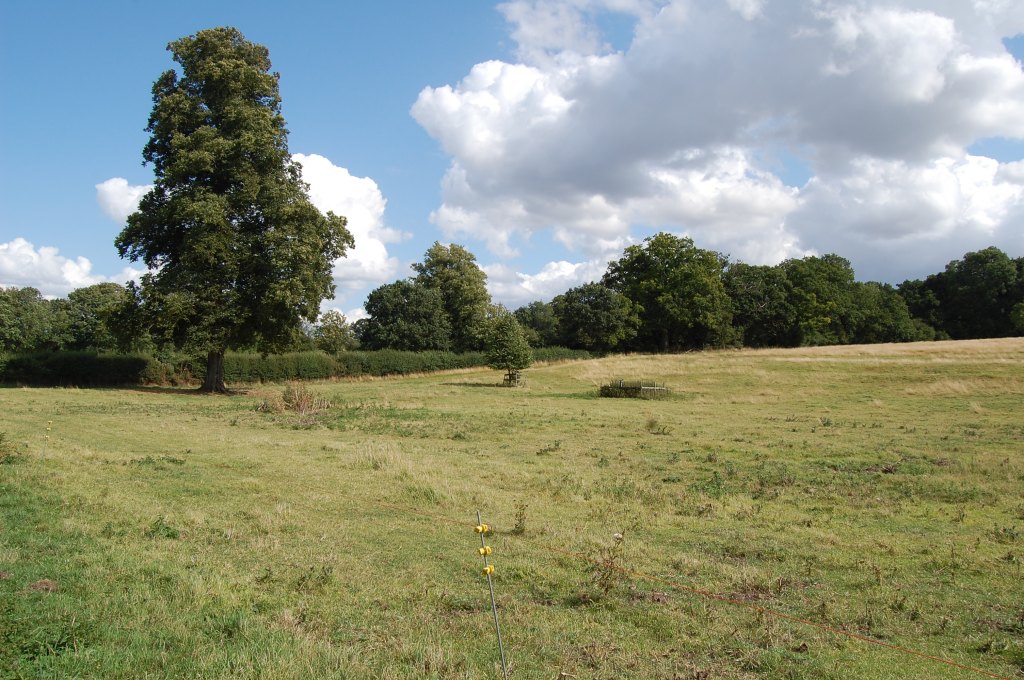
Leave a comment